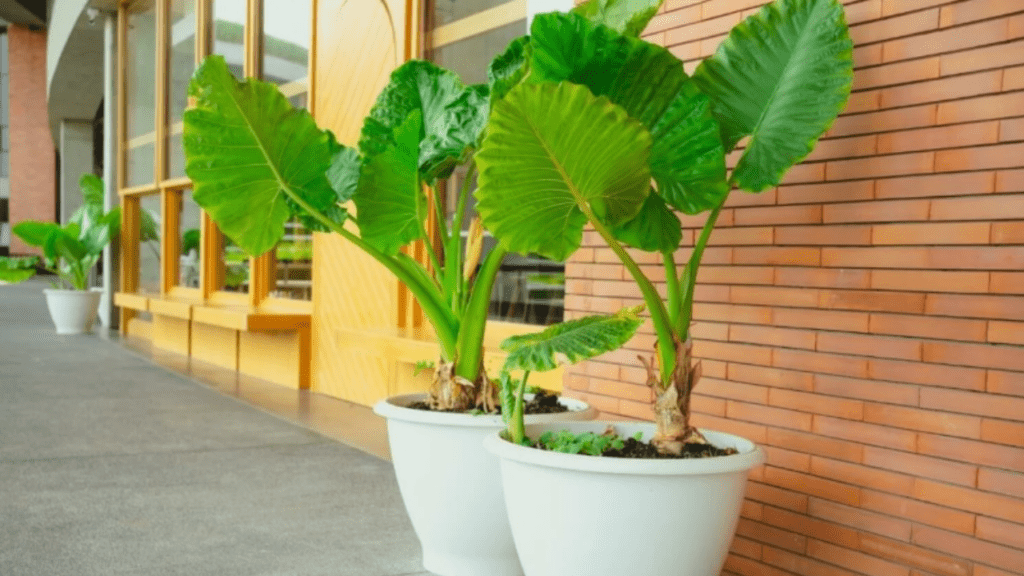
How to Grow and Maintain a Colocasia Indoor Plant
If you’re looking to add a touch of tropical flair to your indoor space, growing a Colocasia indoor plant is a great choice. These beautiful plants, also known as elephant ears, can thrive indoors with the right care and attention. In this article, we’ll guide you through the process of successfully growing and maintaining a Colocasia plant, covering everything from ideal growing conditions to proper maintenance and troubleshooting tips. So, if you’re ready to bring a little bit of the tropics into your home, keep reading for all the information you need to help your Colocasia plant thrive.
Table of Contents
ToggleWhat is Colocasia?
Overview of colocasia plant characteristics
Colocasia, also known as elephant ears, is a tropical plant that is known for its large, heart-shaped leaves and vibrant green color. These plants are popular for adding a touch of tropical flair to indoor spaces and can grow to be quite large if given the proper care. Colocasia plants thrive in warm, humid environments and can be a beautiful addition to any indoor space. They require regular watering and well-draining soil to keep their roots healthy. Additionally, they prefer bright, indirect light and can benefit from occasional fertilization during the growing season. Overall, Colocasia plants are relatively low-maintenance and can bring a sense of tropical paradise to any indoor environment.
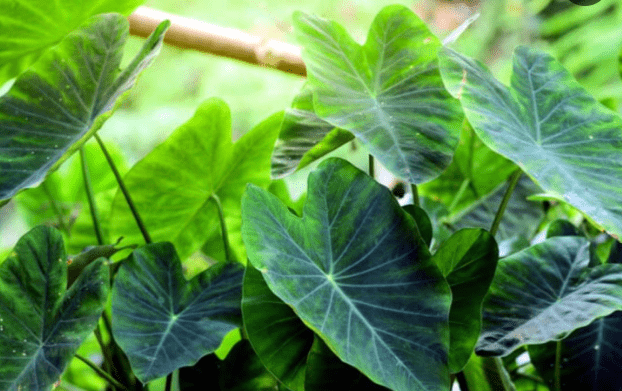
Common names and varieties suitable for indoor cultivation
Include Colocasia esculenta, also known as taro or dasheen, and Colocasia gigantea, also known as giant elephant ear. These varieties are both well-suited for indoor cultivation, as they can thrive in containers and do not require a lot of space to grow. They are also known for their striking foliage and can add a unique aesthetic to any indoor space. When selecting a variety of Colocasia for indoor cultivation, it is important to consider the space and lighting conditions of your indoor environment to ensure that the plant will thrive. With proper care and attention, Colocasia plants can be a beautiful and exotic addition to your indoor plant collection.
Brief history and origins of colocasia
Colocasia plants, also known as taro or elephant ear plants, have a rich and diverse history. They are native to Southeast Asia and have been cultivated for thousands of years for their edible roots and ornamental foliage. Colocasia esculenta, in particular, has been a staple food in many tropical regions, where it is used to make poi, a traditional Hawaiian dish. The plant has also been used in traditional medicine for its healing properties. In addition to its practical uses, Colocasia plants have also been prized for their striking foliage, which has made them a popular ornamental plant in many parts of the world. Today, they are commonly grown as houseplants and can bring a sense of tropical paradise to any indoor environment.
Benefits of Growing Colocasia Indoors
Air purification properties
Colocasia plants have air purification properties, making them a great addition to your indoor plant collection. They can help to improve the air quality in your home by removing toxins and impurities from the air. This can lead to a healthier indoor environment for you and your family. In addition to their air purification properties, Colocasia plants also have striking and exotic foliage, making them a beautiful and unique addition to any indoor space. With proper care and attention, they can thrive indoors and add a touch of tropical paradise to your home.
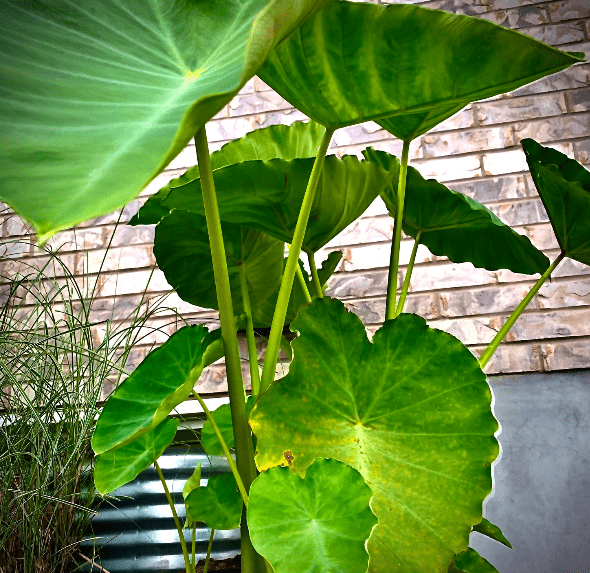
Aesthetic appeal with large, dramatic leaves
Colocasia plants are known for their large, dramatic leaves, which make them a visually stunning addition to any indoor space. Their unique foliage adds a touch of tropical paradise and can enhance the aesthetic appeal of your home. Whether you choose to grow them in pots or as part of a larger indoor garden, these plants can make a bold statement and create a beautiful focal point in any room. Their striking foliage has made them a popular choice for ornamental plants, and they can bring a sense of lush greenery and natural beauty to your indoor environment. With their air purification properties and stunning aesthetics, Colocasia plants are a great choice for adding a touch of tropical paradise to your home.
Tropical ambiance in indoor spaces
Can be achieved with the addition of Colocasia plants. These plants have striking and exotic foliage that can create a unique and beautiful atmosphere in your home. The large, dramatic leaves of Colocasia plants add a touch of tropical paradise to any indoor space. Their aesthetic appeal makes them a visually stunning addition to any room. Whether you choose to grow them in pots or as part of a larger indoor garden, these plants can make a bold statement and create a beautiful focal point in your home. The lush greenery and natural beauty of Colocasia plants can bring a sense of tropical ambiance to your indoor environment. With their air purification properties and stunning aesthetics, Colocasia plants are a great choice for adding a touch of tropical paradise to your home.
Growing Conditions for Colocasia Indoors
Light requirements (direct vs. indirect light)
Colocasia plants thrive in bright, indirect light. This means they should be placed near a window where they can receive filtered sunlight or in an area with bright, indirect light. Direct sunlight can scorch their leaves, so it’s important to avoid placing them in direct sun. If you notice the leaves of your Colocasia plant turning yellow or brown, it may be a sign that they are getting too much direct sunlight. On the other hand, if the leaves are turning pale or drooping, it could indicate that they are not getting enough light. Finding the right balance of light for your Colocasia plants is key to ensuring their health and vitality. Keep an eye on their appearance and adjust their lighting as needed to provide them with the ideal growing conditions. With the right amount of bright, indirect light, your Colocasia plants can thrive and continue to bring a touch of tropical beauty to your home.
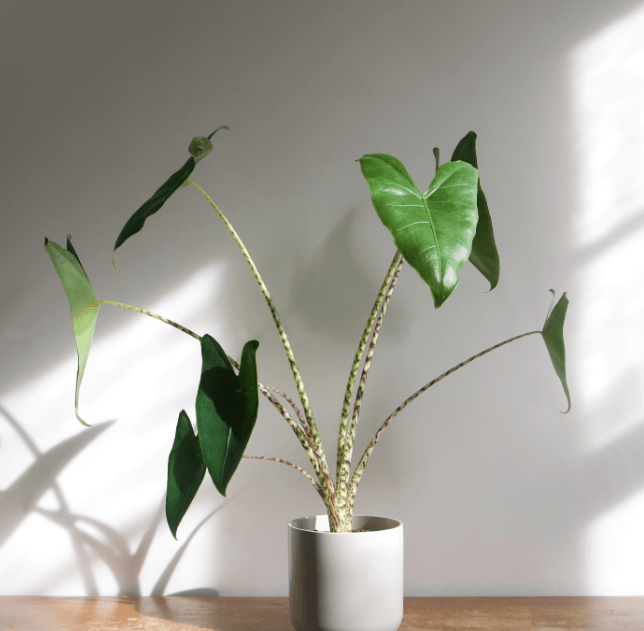
Temperature and humidity preferences
Are important factors to consider when caring for Colocasia plants. These plants thrive in warm, humid conditions, so it’s important to keep them in a space where the temperature is consistently between 65-75 degrees Fahrenheit. Additionally, they prefer high humidity levels, so placing them in a room with a humidifier or misting their leaves regularly can help to create the ideal environment for them to thrive. However, it’s important to avoid placing them in areas with drafts or extreme temperature fluctuations, as this can lead to stress and damage to the plants. By providing the right temperature and humidity conditions, you can help your Colocasia plants to flourish and grow beautifully.
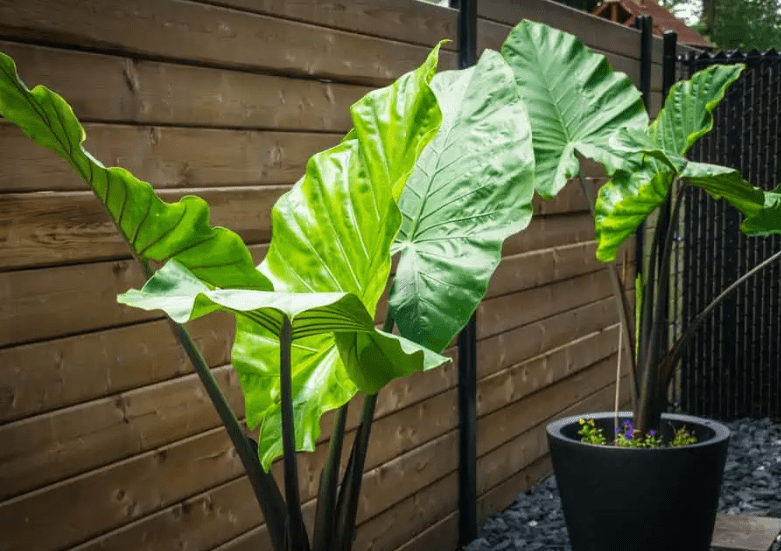
Soil type and drainage considerations
Are important factors to consider when caring for Colocasia plants. These plants prefer well-draining, nutrient-rich soil to thrive. A mix of potting soil and perlite or sand can help create the ideal soil conditions for Colocasia plants. It’s important to avoid compacted or waterlogged soil, as this can lead to root rot and other issues. When watering your Colocasia plants, be sure to allow the soil to dry out slightly between waterings to prevent waterlogged conditions. Proper soil and drainage considerations can help ensure that your Colocasia plants have the best chance of thriving and staying healthy.
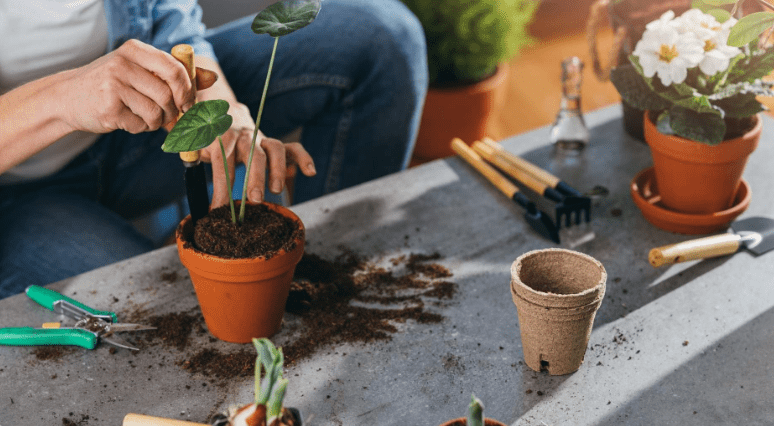
Planting and Potting Colocasia
Choosing the right container size and type
Is crucial for the health and growth of your Colocasia plants. The size of the container will depend on the size of the plant and its root system. It’s important to choose a container that provides enough room for the roots to spread out and grow. A larger container can help prevent the plant from becoming root-bound and stunted in its growth.
In terms of the type of container, it’s best to choose one with good drainage holes to allow excess water to escape. This will help prevent waterlogged soil, which can lead to root rot. Additionally, using a container made of a breathable material, such as terracotta, can help promote air circulation to the roots and prevent moisture buildup.
When repotting your Colocasia plants, be sure to choose a container that is slightly larger than the current one to allow for continued growth. It’s also important to use well-draining soil and to carefully transplant the plant to avoid damaging the roots.
By choosing the right container size and type, you can provide the optimal growing conditions for your Colocasia plants and help them thrive and flourish.
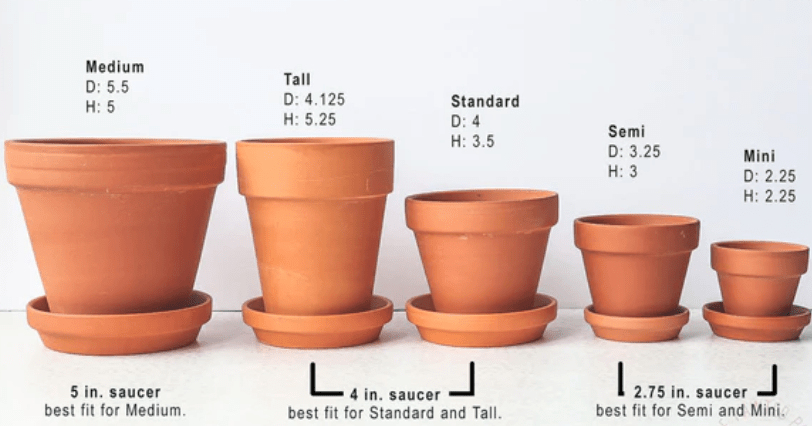
Potting mix composition (peat-based vs. well-draining)
When it comes to potting mix composition, there are a few important factors to consider. Peat-based potting mixes are commonly used for houseplants and provide good moisture retention. However, they can also become compacted over time, leading to poor drainage and potentially causing root rot. On the other hand, well-draining potting mixes, which may include materials such as perlite or sand, allow excess water to easily escape, preventing waterlogged soil and promoting healthy root growth. When choosing a potting mix for your plants, it’s important to consider their specific needs and the potential for overwatering. Overall, a well-draining potting mix is often the best choice for promoting healthy plant growth and preventing water-related issues.
Planting depth and spacing guidelines
Are essential to follow for successful plant growth. When planting seeds or seedlings, it is important to plant them at the proper depth to ensure they have enough soil contact for root development. Planting too deep can restrict oxygen flow to the roots, while planting too shallow can expose the roots to potential damage. Different plants have specific planting depth requirements, so it’s important to research each plant variety before planting.
In addition to planting depth, spacing guidelines are crucial for allowing plants to have enough room to grow and thrive. Overcrowding can lead to competition for nutrients and sunlight, which can result in stunted growth and poor overall health of the plants. Proper spacing also helps to prevent the spread of disease and pests among plants.
Overall, following planting depth and spacing guidelines is important for promoting healthy and successful plant growth. By paying attention to these factors, gardeners can maximize the potential of their plants and create a beautiful and thriving garden.
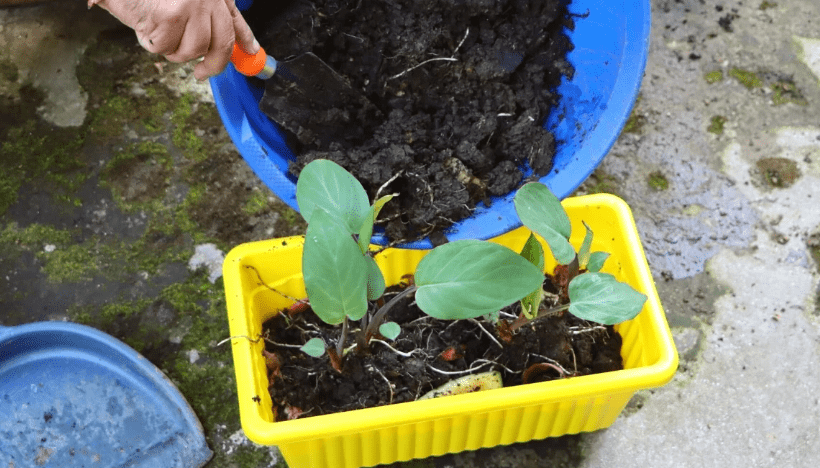
Watering and Feeding Colocasia Indoors
Watering frequency and techniques (keeping soil consistently moist)
When it comes to watering and feeding Colocasia plants indoors, it’s important to keep the soil consistently moist. These plants thrive in soil that is kept consistently moist, but not waterlogged. It’s best to water the plants when the top inch of soil starts to dry out. You can also mist the leaves occasionally to increase humidity, which these plants enjoy. When feeding your Colocasia plant, use a balanced liquid fertilizer every two weeks during the growing season. This will help to provide the necessary nutrients for healthy growth. Overall, it’s important to keep a close eye on the moisture levels of the soil and provide regular feeding to ensure the best care for your Colocasia plant.
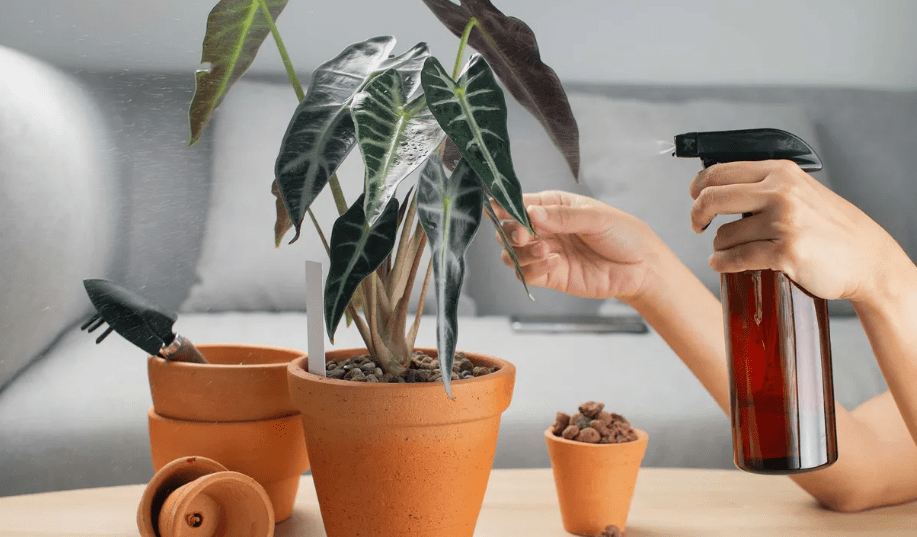
Fertilization schedule and types of fertilizer recommended
When it comes to fertilizing Colocasia plants, it’s important to use a balanced liquid fertilizer every two weeks during the growing season. This will provide the necessary nutrients for healthy growth. You can also use a slow-release fertilizer if you prefer not to fertilize as frequently. It’s important to follow the instructions on the fertilizer packaging to ensure that you are using the correct amount for your Colocasia plant. Additionally, be sure to use a fertilizer that is high in nitrogen to support the growth of the plant’s large, lush leaves. In terms of the schedule, it’s best to fertilize your Colocasia plant during the spring and summer months when it is actively growing. During the fall and winter, you can reduce the frequency of fertilization as the plant enters a period of dormancy. Remember to always water your plant before fertilizing to prevent any risk of root burn. By following these guidelines, you can ensure that your Colocasia plant receives the proper nutrients it needs to thrive.
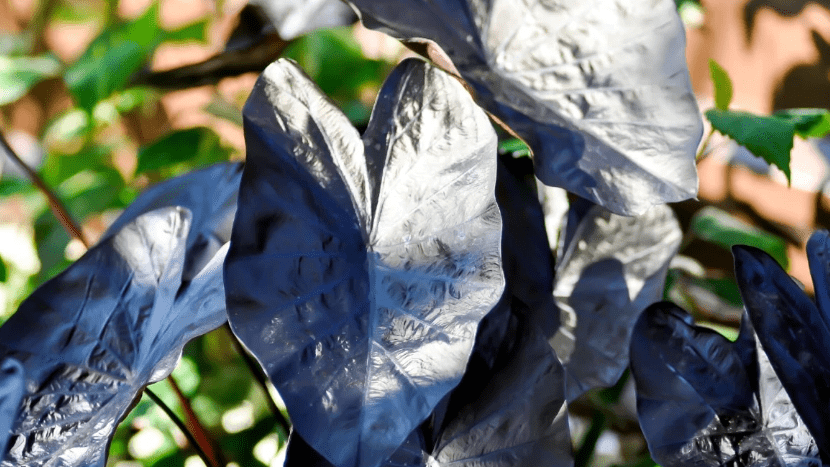
Signs of overwatering or underwatering and how to correct
Overwatering and underwatering are common issues when it comes to plant care, including Colocasia plants. Signs of overwatering include yellowing or wilting leaves, mushy or discolored stems, and a foul odor coming from the soil. To correct overwatering, it’s important to allow the soil to dry out between waterings and adjust your watering schedule accordingly. On the other hand, signs of underwatering include dry, crispy, or brown leaves, and soil that is extremely dry and pulling away from the pot. To correct underwatering, make sure to water the plant thoroughly and consistently, and consider using a self-watering pot or a moisture meter to help monitor the soil moisture level. It’s also important to ensure that your Colocasia plant is in well-draining soil to prevent waterlogged conditions. By paying attention to these signs and making the necessary adjustments, you can help your Colocasia plant thrive and stay healthy.
Pruning and Maintenance
Removing yellowing or damaged leaves
Is an important part of caring for your Colocasia plant. Not only does it improve the plant’s appearance, but it also helps to promote new growth and overall health. When you notice yellowing or damaged leaves on your Colocasia plant, it’s important to carefully remove them using clean, sharp scissors or pruning shears. Trim the leaves back to the base of the plant, making sure not to damage any healthy foliage in the process. This will help to redirect the plant’s energy towards the healthy leaves and encourage new growth. It’s also important to regularly inspect your Colocasia plant for any signs of pests or disease and take necessary action to address these issues. By practicing proper pruning and maintenance, you can help your Colocasia plant to thrive and continue to add beauty to your indoor or outdoor space.
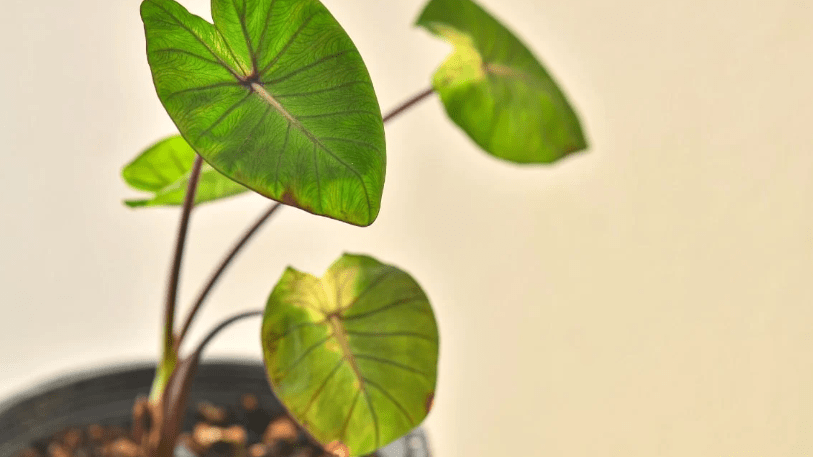
Controlling pests and diseases specific to colocasia
Can be a challenge, but with proper care and attention, you can keep your plant healthy and thriving. One important aspect of caring for colocasia plants is pruning and maintenance. Regularly removing yellowing or damaged leaves is essential for the overall health and appearance of the plant. By carefully trimming these leaves back to the base of the plant, you can promote new growth and redirect the plant’s energy towards healthy foliage. Additionally, it’s important to keep an eye out for any signs of pests or disease and take prompt action to address these issues. By practicing proper pruning and maintenance, you can help your colocasia plant to flourish and continue to add beauty to your indoor or outdoor space. Remember that with dedication and attention to detail, you can successfully control pests and diseases specific to colocasia and ensure the long-term health of your plant.
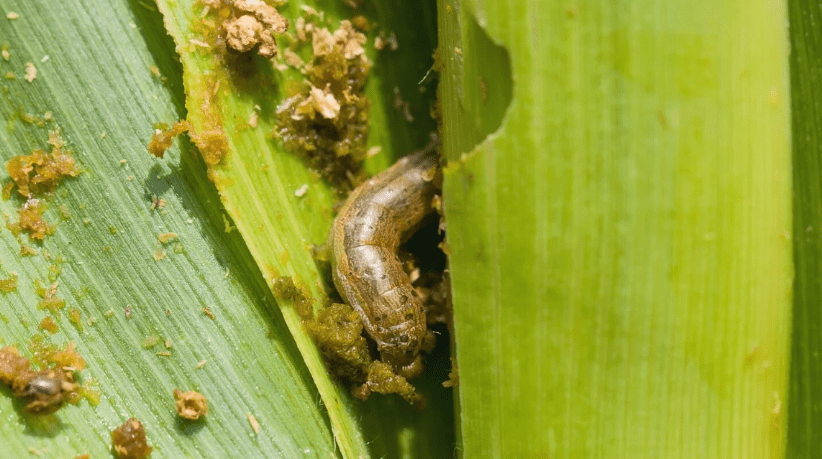
Tips for managing plant size and shape indoors
Caring for colocasia plants indoors can be a rewarding experience, but it’s important to keep their size and shape in check. One effective method for managing plant size and shape is regular pruning and maintenance. By removing any yellowing or damaged leaves, you can promote new growth and maintain a balanced and healthy appearance for your plant. Additionally, consider using plant ties or stakes to support the plant and guide its growth in a desired direction. Another helpful tip is to regularly rotate the plant to ensure even growth on all sides. Pay attention to the plant’s environment and make any necessary adjustments to light, temperature, and humidity to promote healthy growth. With these tips in mind, you can effectively manage the size and shape of your colocasia plant indoors and create a beautiful and thriving indoor garden space.
Propagation Methods for Colocasia
Propagation through division of rhizomes
Is a common method for increasing the number of colocasia plants. To do this, carefully dig up the plant and locate the rhizomes, which are thick underground stems. Using a clean, sharp knife, carefully divide the rhizomes into sections, making sure each section has at least one growing point or eye. Plant these divisions in a well-draining potting mix and keep the soil consistently moist to encourage new growth. It’s important to provide the right conditions for the divided rhizomes to thrive, including bright indirect light and warm temperatures. With proper care, the divided rhizomes will develop into new colocasia plants, allowing you to expand your indoor garden collection. By utilizing these propagation methods and effectively managing the size and shape of your colocasia plants, you can enjoy a beautiful and thriving indoor garden space.
Steps for successful propagation indoors
- Select a healthy parent plant: Choose a mature and healthy colocasia plant to use for propagation. Look for a plant with strong, vibrant leaves and a well-established root system.
- Prepare the rhizomes: Carefully dig up the plant and locate the rhizomes, which are the thick underground stems. Use a clean, sharp knife to divide the rhizomes into sections, ensuring that each section has at least one growing point or eye.
- Plant the divisions: Plant the divided rhizomes in a well-draining potting mix, making sure to cover the rhizomes with soil and water thoroughly. Keep the soil consistently moist to encourage new growth.
- Provide the right conditions: Place the newly planted divisions in an area with bright, indirect light and maintain warm temperatures to promote healthy growth. Proper environmental conditions are essential for the divided rhizomes to thrive and develop into new colocasia plants.
- Monitor and care for the new plants: Keep a close eye on the newly propagated plants, ensuring that they receive adequate moisture, light, and nutrients. As the plants grow, provide support and care to help them establish strong root systems and develop into mature, thriving plants.
By following these steps for successful propagation indoors, you can effectively increase the number of colocasia plants in your indoor garden and enjoy the beauty and benefits of a diverse plant collection.
Colocasia Indoor Plant Care Tips
Adjusting care routines for seasonal changes
is important to ensure the health and growth of your indoor plants. As the seasons change, you may need to adjust your care routine to accommodate the needs of your plants. For example, during the spring and summer months, you may need to water your plants more frequently and provide them with more sunlight. In the fall and winter, you may need to reduce watering and provide additional warmth for your plants.
When it comes to propagating colocasia plants, it’s important to plant the divided rhizomes in a well-draining potting mix and keep the soil consistently moist to encourage new growth. Provide the right conditions by placing the newly planted divisions in an area with bright, indirect light and maintain warm temperatures to promote healthy growth.
It is essential to monitor and care for the new plants as they grow, ensuring they receive adequate moisture, light, and nutrients. By following these steps for successful propagation indoors, you can effectively increase the number of colocasia plants in your indoor garden and enjoy the beauty and benefits of a diverse plant collection. Adjusting your care routines for seasonal changes will help your indoor plants thrive throughout the year.
Common issues and troubleshooting guide
When it comes to taking care of indoor plants, it’s important to be aware of the common issues that may arise and how to troubleshoot them. For example, during the spring and summer months, you may need to water your plants more frequently and provide them with more sunlight. In the fall and winter, you may need to reduce watering and provide additional warmth for your plants. It’s important to pay attention to the changing needs of your plants as the seasons change.
When it comes to propagating colocasia plants, it’s important to plant the divided rhizomes in a well-draining potting mix and keep the soil consistently moist to encourage new growth. Provide the right conditions by placing the newly planted divisions in an area with bright, indirect light and maintain warm temperatures to promote healthy growth. It is essential to monitor and care for the new plants as they grow, ensuring they receive adequate moisture, light, and nutrients.
By following these steps for successful propagation indoors, you can effectively increase the number of colocasia plants in your indoor garden and enjoy the beauty and benefits of a diverse plant collection. Adjusting your care routines for seasonal changes will help your indoor plants thrive throughout the year. It’s important to be observant and responsive to the needs of your plants in order to ensure their health and growth.
Using Colocasia in Indoor Decor
Design ideas and aesthetic considerations
Colocasia plants can be a beautiful addition to your indoor decor. Their large, dramatic leaves can add a tropical and exotic feel to any space. When incorporating Colocasia into your indoor design, consider the size and shape of the leaves and how they can complement the overall aesthetic of the room. You can use them as a focal point in a corner or as part of a larger plant arrangement. Their lush foliage can add texture and depth to your indoor space, creating a calm and relaxing atmosphere. Additionally, you can play with different pot and planter options to enhance the visual appeal of the plants. Consider using decorative pots or baskets that complement the style of your home. With careful consideration and placement, Colocasia plants can elevate the design of your indoor space and bring a touch of nature into your home.
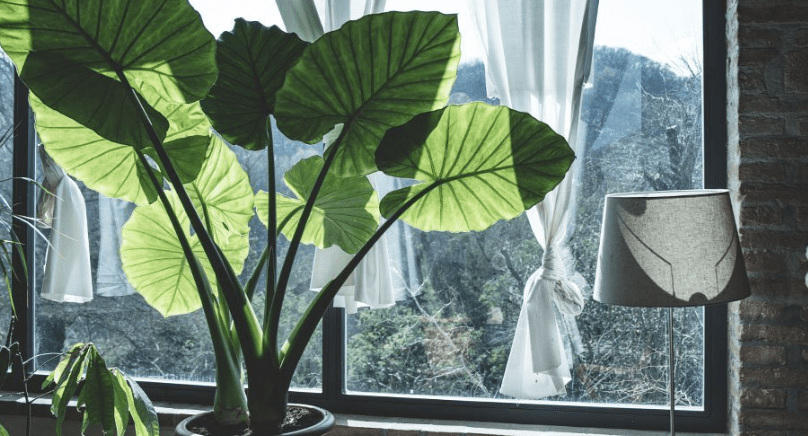
Pairing colocasia with other indoor plants and decor elements
Can create a stunning and lush display in your home. When selecting other plants to pair with colocasia, consider their size, shape, and color to create a harmonious arrangement. You can also incorporate different textures and heights to add visual interest. Consider mixing colocasia with air-purifying plants like snake plants or peace lilies to create a healthy and vibrant indoor environment. Additionally, you can add decorative elements such as pebbles, moss, or small figurines to enhance the overall aesthetic. When choosing pots or planters for your colocasia and other plants, consider the material and style to complement the overall design of your space. Whether you create a tropical oasis or a modern and minimalist display, pairing colocasia with other indoor plants and decor elements can elevate the visual appeal of your home.
In conclusion, growing and maintaining a Colocasia indoor plant requires attention to detail and a regular maintenance routine. Providing the right growing conditions, such as adequate sunlight and well-draining soil, is essential for the plant’s health. Regular watering and occasional fertilization will help the plant thrive. Additionally, monitoring for pests and diseases and taking prompt action to address any issues will contribute to the overall success of growing and maintaining a Colocasia indoor plant. With proper care and attention, your plant can thrive and add beauty to your indoor space.
Frequently asked questions And Answer
Colocasia plants thrive in bright, indirect light. They can also tolerate some shade, but too much direct sunlight can scorch their leaves.
Colocasia plants prefer consistently moist soil, so it’s important to water them regularly. However, it’s also important to ensure that the soil is well-draining to prevent waterlogged roots.
A well-draining, peat-based potting mix is ideal for Colocasia plants. It should be kept consistently moist, but not waterlogged.
During the growing season, which is typically spring and summer, you can fertilize your Colocasia plant every 2-4 weeks with a balanced, water-soluble fertilizer.
Keeping your plant in a well-ventilated area, avoiding overwatering, and regularly inspecting the leaves for any signs of pests or diseases can help prevent issues.
Yes, Colocasia plants can be propagated through division. Simply separate the rhizomes and plant them in their own containers with fresh potting mix.
Colocasia plants thrive in warm, humid environments. They prefer temperatures between 65-75°F and high humidity levels.
Regularly cleaning the leaves with a damp cloth, pruning any yellow or damaged leaves, and providing proper care and maintenance will help keep your Colocasia plant healthy and vibrant.
